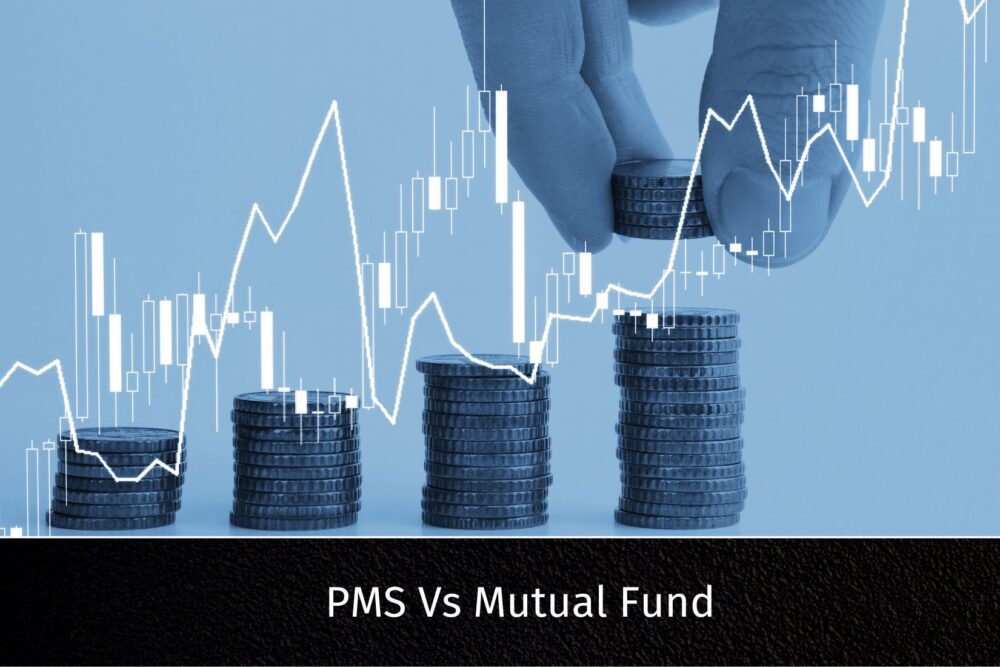When it comes to wealth creation, investors often find themselves choosing between Portfolio Management Services (PMS) and Mutual Funds. While both investment vehicles provide access to professional fund management, there is a significant disparity in their taxation and cost structures. Interestingly, mutual funds enjoy a tax-friendly status, making it easier for investors to maximize post-tax returns.
In this article, we decode the key tax and cost aspects of PMS vs Mutual Funds and analyze which option provides a better financial advantage.
Capital Gains Tax on Returns
The fundamental difference between PMS and Mutual Funds lies in how capital gains tax is applied.
How Taxation Works for PMS
- PMS investments are made through the investor’s demat account.
- Every buy and sell transaction by the PMS manager incurs a capital gains tax for the investor.
- Frequent portfolio churn results in short-term capital gains (STCG) taxed at 15% and long-term capital gains (LTCG) taxed at 10% (beyond ₹1 lakh in a financial year).
How Taxation Works for Mutual Funds
- Mutual funds operate under a pass-through structure, meaning tax is levied only when the investor redeems units.
- Investors in equity-oriented mutual funds are liable to pay LTCG at 10% on gains exceeding ₹1 lakh, only when units are redeemed.
- Since tax is deferred until redemption, mutual funds allow for better compounding of returns.
Example: PMS vs Mutual Funds Tax Impact
Let’s assume Aarav invests ₹50 lakh in Mutual Fund X, while Riya invests ₹50 lakh in PMS Y. By the end of the year, both investments grow to ₹55 lakh.
| Particulars | PMS (Riya) | Mutual Funds (Aarav) |
|---|---|---|
| Initial Investment | ₹50,00,000 | ₹50,00,000 |
| Gains Booked by Fund Manager | ₹5,00,000 | ₹5,00,000 |
| Investment Value Before Tax | ₹55,00,000 | ₹55,00,000 |
| Capital Gains Tax Rate | 15% (STCG) | 10% (LTCG on gains beyond ₹1 lakh) |
| Tax on Gains | ₹75,000 | ₹40,000 |
| Post-Tax Returns | ₹54,25,000 | ₹54,60,000 |
Since mutual fund taxation occurs only at the time of redemption, Aarav achieves higher post-tax returns compared to Riya, who incurs tax on every PMS transaction.
Expense Ratio vs Portfolio Management Fee
Another critical cost consideration is the management fee structure:
PMS Fee Structure
- PMS managers charge a flat fee (typically 1-2% of assets under management), and some also impose a performance-based incentive fee.
- For a ₹50 lakh portfolio, a 1% PMS fee results in ₹50,000 in annual charges.
- Tax authorities have conflicting views on whether PMS fees are deductible for capital gains computation.
Mutual Fund Fee Structure
- Mutual funds charge an expense ratio, typically ranging from 0.5% to 2.5%.
- However, unlike PMS, mutual fund fees are automatically deducted from the Net Asset Value (NAV), making them tax-efficient for investors.
Thus, mutual funds offer more clarity on cost structure, while PMS fees may add an additional financial burden on investors.
Taxation on Dividends
Dividends are taxed differently under PMS and Mutual Funds:
- PMS Dividends: Directly credited to the investor’s account and taxed at slab rates. If the dividend exceeds ₹5,000, TDS at 10% is deducted.
- Mutual Fund Dividends: Can be reinvested into the fund, allowing for compounding and deferred taxation until redemption.
This reinvestment mechanism gives mutual funds an edge in compounding returns over the long term.
Final Verdict: Which One is Better?
| Parameter | PMS | Mutual Funds |
| Taxation | Taxed at the time of every transaction | Taxed only at redemption |
| Capital Gains | Higher tax outflow due to frequent trades | Lower tax due to deferred taxation |
| Expense Structure | Fixed + performance-based fees | Expense ratio deducted from NAV |
| Dividend Taxation | Taxed immediately at slab rates | Reinvestment option allows compounding |
| Compounding Benefit | Lower due to frequent tax outflows | Higher due to tax deferral |
While PMS offers a more customized portfolio approach, mutual funds provide a significant tax advantage, lower costs, and higher post-tax returns. Investors looking for cost-efficient wealth growth should carefully consider the tax impact before opting for PMS over mutual funds.
Conclusion
The unfair advantage clearly lies with mutual funds, primarily due to favorable tax treatment and lower cost structures. PMS, despite its tailored approach, faces higher tax burdens and uncertainty in deducting management fees. For most investors, mutual funds emerge as the superior choice for long-term wealth creation with better compounding potential and tax efficiency.







